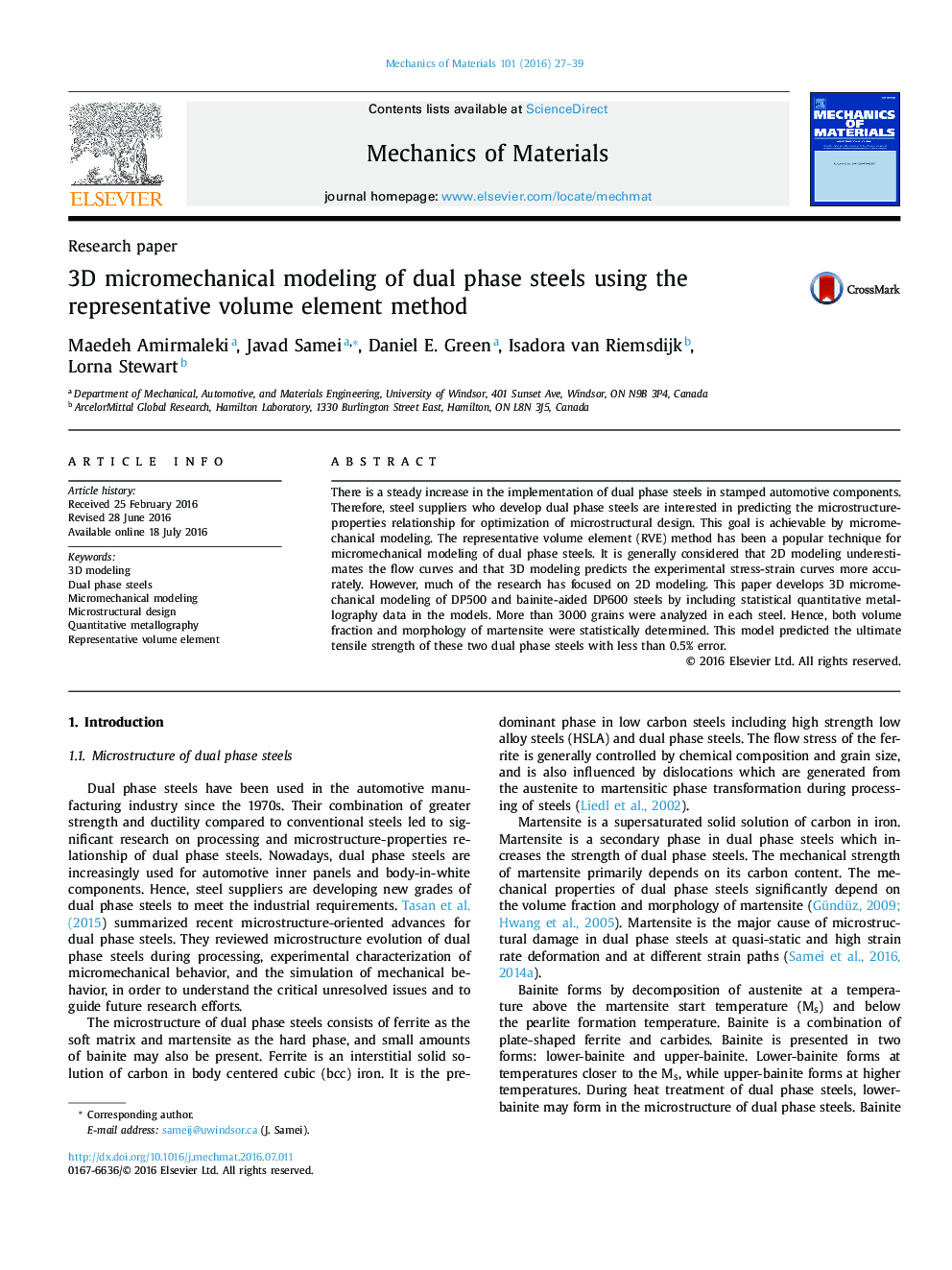| کد مقاله | کد نشریه | سال انتشار | مقاله انگلیسی | نسخه تمام متن |
|---|---|---|---|---|
| 799477 | 1467438 | 2016 | 13 صفحه PDF | دانلود رایگان |

• Fundamentals of the RVE technique are summarized. It is a good start for keen readers to learn this method.
• Statistical quantitative metallography data is used to generate 3D RVEs very similar to the actual microstructure. More than 3000 grains were analyzed in each steel.
• Morphology of martensite is included in the 3D RVEs. Hence, steel supplier can optimize both fraction and morphology of martensite in the microstructure.
• Using the present model, steel suppliers can predict the UTS of DP500 and DP600 steels with error less than 0.5% before production.
• Optimized RVE size, mesh size and element type are reported.
There is a steady increase in the implementation of dual phase steels in stamped automotive components. Therefore, steel suppliers who develop dual phase steels are interested in predicting the microstructure-properties relationship for optimization of microstructural design. This goal is achievable by micromechanical modeling. The representative volume element (RVE) method has been a popular technique for micromechanical modeling of dual phase steels. It is generally considered that 2D modeling underestimates the flow curves and that 3D modeling predicts the experimental stress-strain curves more accurately. However, much of the research has focused on 2D modeling. This paper develops 3D micromechanical modeling of DP500 and bainite-aided DP600 steels by including statistical quantitative metallography data in the models. More than 3000 grains were analyzed in each steel. Hence, both volume fraction and morphology of martensite were statistically determined. This model predicted the ultimate tensile strength of these two dual phase steels with less than 0.5% error.
Figure optionsDownload as PowerPoint slide
Journal: Mechanics of Materials - Volume 101, October 2016, Pages 27–39